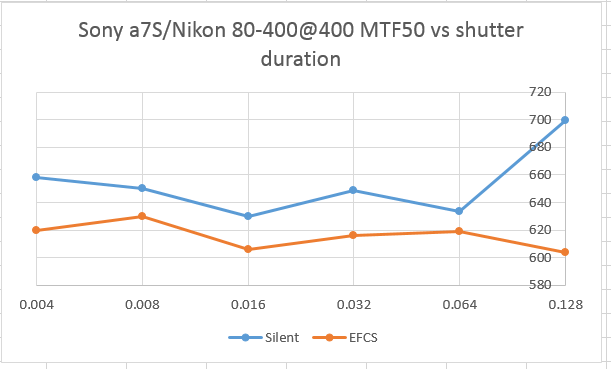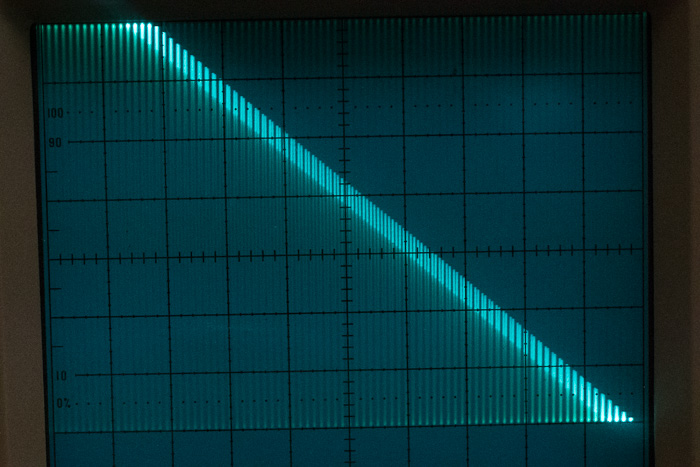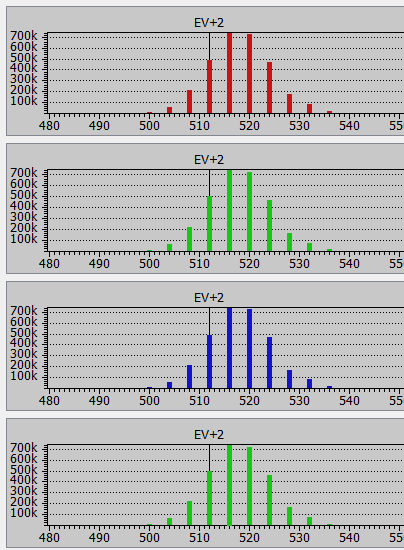The Sony a7S has raw bit depths of 12 or 13 bits depending on the way the camera is set. It also has low read noise in many circumstances. The combination of the two conditions has lead several people to ask me if, when I think I’m measuring read noise, am I sometimes measuring just the… [Read More]
Archives for 2014
EFCS vs silent shutter vibration
I’ve already established that electronic first curtain shutter can provide sharper tripod-mounted images with the Sony a7 than with the all-mechanical shutter mode on that camera and the all-mechanical shutter on the a7R. I wondered if using the a7S in all-electronic shutter mode — aka silent shutter — would provide any benefits. I took the… [Read More]
Sony a7S silent shutter scanning speed for APS-C images
I measured the scanning speed of the Sony a7S silent (fully electronic) shutter in this post. The answer was about 1/30 of a second. Someone asked me how fast the electronic shutter scanned in APS-C mode. Here’s the scope shot: And here it is with a white line superimposed so that it’s easier to figure… [Read More]
Sony a7S read noise in silent mode
I received a request to compare the read noise versus ISO setting of the Sony a7S in silent shutter mode to that of single shot electronic first curtain shutter (EFCS) mode. I already had the data (look here ), so all I had to do was put both curves on the same graph: Mostly as… [Read More]
Sony a7S read noise in speed priority continuous mode
I’ve been asked if the read noise in speed-priority continuous drive mode is the same as it is in plain old continuous mode. It appears that it is: The histogram indicates the same 12-bit precision:
- « Previous Page
- 1
- …
- 25
- 26
- 27
- 28
- 29
- …
- 62
- Next Page »



